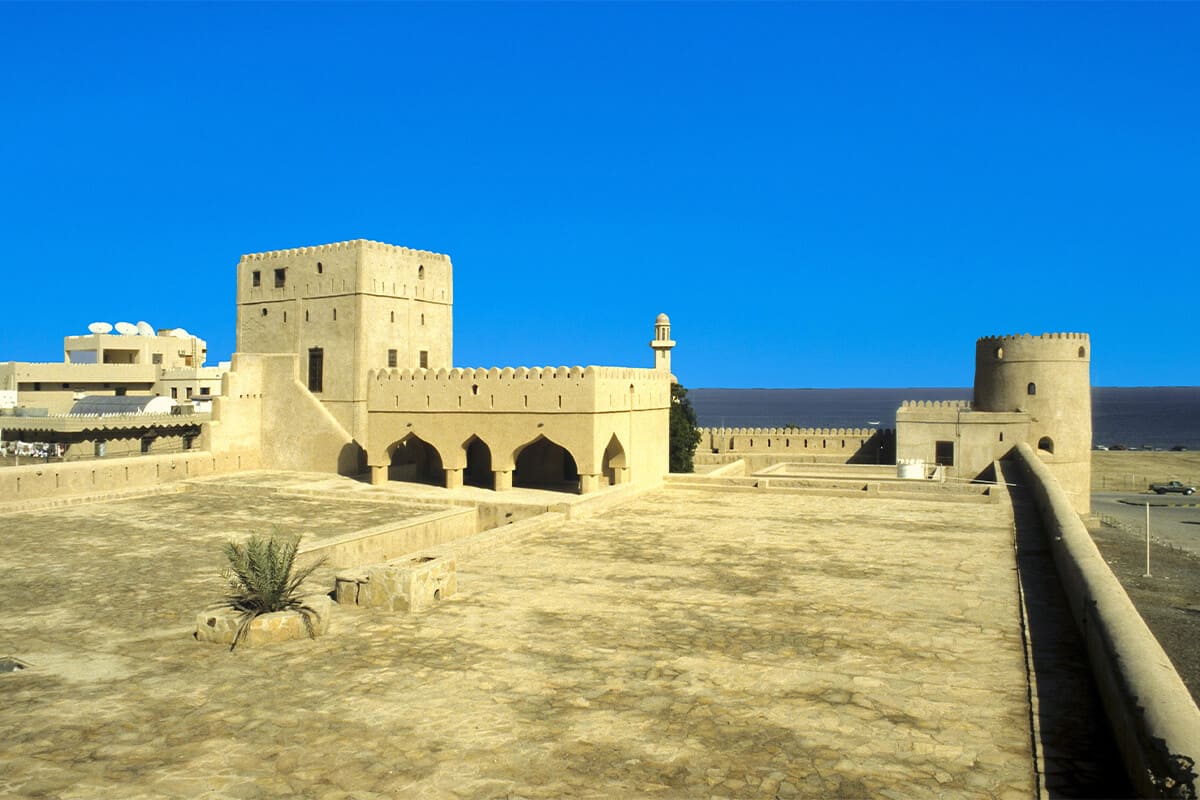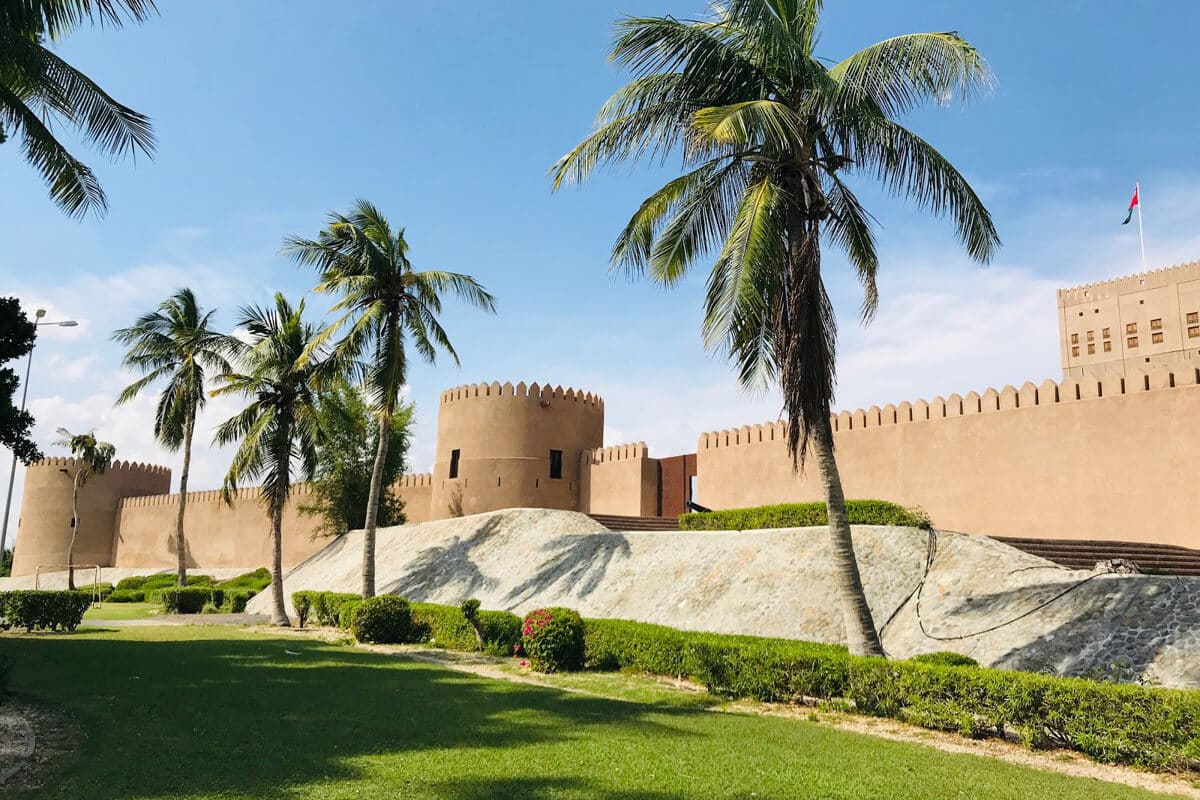Sohar Fort is one of Oman’s most captivating historical landmarks, representing the country’s rich maritime and trade history. Located in the coastal city of Sohar, this fortress has played a crucial role in defending Oman from invasions and has witnessed centuries of historical transformations. Whether you are a history enthusiast, an architecture lover, or a traveler seeking an authentic cultural experience, Sohar Fort is a must-visit destination. In this article, True Oman Tours takes you on a journey to discover why Sohar Fort stands out as one of Oman’s most intriguing landmarks.
Historical Significance of Sohar Fort
Sohar Fort is believed to have been built between the 13th and 14th centuries, though some historical records suggest that certain structures may have existed even earlier. As one of the most prominent forts in Oman, it played a crucial role in the country’s defense and trade, particularly during the era when Oman was renowned for its maritime prowess. Sohar, historically regarded as one of the wealthiest and most important cities in Oman, was a major center for trade, particularly in copper, which was exported to various regions, including Mesopotamia and the Indus Valley Civilization.
The fort played a key role in defending Oman from Portuguese invaders in the 16th century. The Portuguese occupied Oman from 1507 to 1648, and Sohar Fort was one of the last strongholds they held before being expelled by the Omani forces led by Imam Sultan bin Saif al-Yarubi. After the Portuguese occupation, the fort was reinforced and continued to serve as a strategic military outpost.
Throughout history, Sohar Fort has served multiple purposes, including being a royal residence for Omani rulers, an administrative center, and a military post. It has undergone numerous renovations to maintain its structural integrity while preserving its historical essence. Today, it stands as a well-preserved historical site, offering visitors an immersive experience into Oman’s glorious past.

Architectural Features of Sohar Fort
One of the most captivating aspects of Sohar Fort is its impressive architectural design. Built with sturdy stone and mudbrick, the fortress exhibits a blend of traditional Omani defensive architecture with Portuguese influences. The fort’s structure includes:
- Massive defensive walls that have withstood attacks for centuries.
- A five-story tower, which is one of the most iconic features of the fort offers a panoramic view of Sohar and its coastline.
- Underground tunnels were historically used for escape routes and secret passages.
- A large central courtyard, which served as a gathering place for officials and soldiers.
- Traditional Omani watchtowers, were strategically placed for surveillance and protection against invaders.
The combination of these architectural elements makes Sohar Fort not just a defensive stronghold but also an artistic masterpiece reflecting the historical evolution of military architecture in Oman. The fort’s restoration has ensured that every detail of its construction remains intact, allowing visitors to witness its grandeur just as it was centuries ago.

Cultural and Touristic Value
Sohar Fort is more than just a historical monument; it is also a cultural hub that attracts visitors from around the world. Inside the fort, you will find a museum that showcases Oman’s history, trade, maritime activities, and military defense. The museum exhibits include:
- Ancient artifacts, including pottery, weapons, and tools used by past civilizations.
- Historical documents, providing insight into Sohar’s trading history and its connections with regions such as India, China, and East Africa.
- Traditional Omani costumes and jewelry, offering a glimpse into local heritage and fashion trends throughout history.
- Replicas of ancient ships, symbolizing Oman’s strong maritime tradition and its role in global commerce.
Additionally, the fort serves as a venue for cultural events, traditional performances, and educational programs. These activities allow visitors to experience Omani culture firsthand and deepen their appreciation of the country’s history. The fort hosts historical reenactments, showcasing Omani warriors in traditional attire, demonstrating battle strategies and weaponry techniques used in the past.

Best Time to Visit Sohar Fort
Oman experiences a desert climate, with extremely hot summers and mild winters. The best time to visit Sohar Fort is between October and April, when temperatures are pleasant, ranging from 20°C to 30°C (68°F to 86°F). During this period, you can comfortably explore the fort without the intense heat affecting your experience.
Additionally, visiting during cultural festivals or national holidays can enhance your experience, as the fort often hosts special events, exhibitions, and traditional Omani performances during these times. If you visit during National Day (November 18th) or Renaissance Day (July 23rd), you may witness special celebrations, traditional music, and folk dances within the fort’s premises.
How to Get to Sohar Fort
Sohar Fort is located in Sohar, Oman, approximately 200 km northwest of Muscat, the capital city. There are several convenient ways to reach the fort:
- By Car: The most convenient option is to drive from Muscat via the Sultan Qaboos Highway, which takes around two hours. The road is well-maintained, making it an easy and scenic journey.
- By Bus: Public buses run between Muscat and Sohar, operated by Mwasalat. Once you arrive in Sohar, you can take a taxi to the fort.
- By Air: Sohar has an airport with domestic and limited international flights. From the airport, you can hire a taxi to reach the fort.
Nearby Attractions and Activities
Sohar Fort is just one of many historical and cultural attractions in the city. Visitors can explore other nearby sites to make the most of their trip:
- Sohar Corniche: A beautiful coastal promenade where visitors can enjoy a relaxing walk, local seafood, and stunning sunset views.
- Sohar Handicrafts Souq: A traditional market where you can purchase authentic Omani souvenirs, including silverware, pottery, and textiles.
- Sohar Royal Gardens: A lush green space ideal for picnics, leisure activities, and enjoying Oman’s natural beauty.
- Wadi Hibi: A natural oasis located a short drive from Sohar, perfect for adventure seekers who enjoy hiking, exploring natural landscapes, and experiencing Oman’s natural beauty.
These attractions make Sohar an ideal destination for travelers looking to experience a blend of history, culture, and nature.
Conclusion
Sohar Fort is undoubtedly one of Oman’s most fascinating historical sites. Its rich history, impressive architecture, cultural significance, and strategic location make it a must-visit destination for tourists. Whether you are interested in exploring Oman’s past, admiring historical architecture, or immersing yourself in local traditions, Sohar Fort offers a unique and memorable experience.
By visiting Sohar Fort, you are not just stepping into a historical site—you are stepping into a piece of Oman’s heritage that continues to inspire and educate visitors from all over the world.


0 Comment